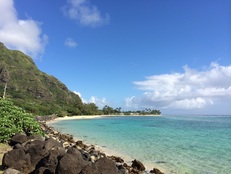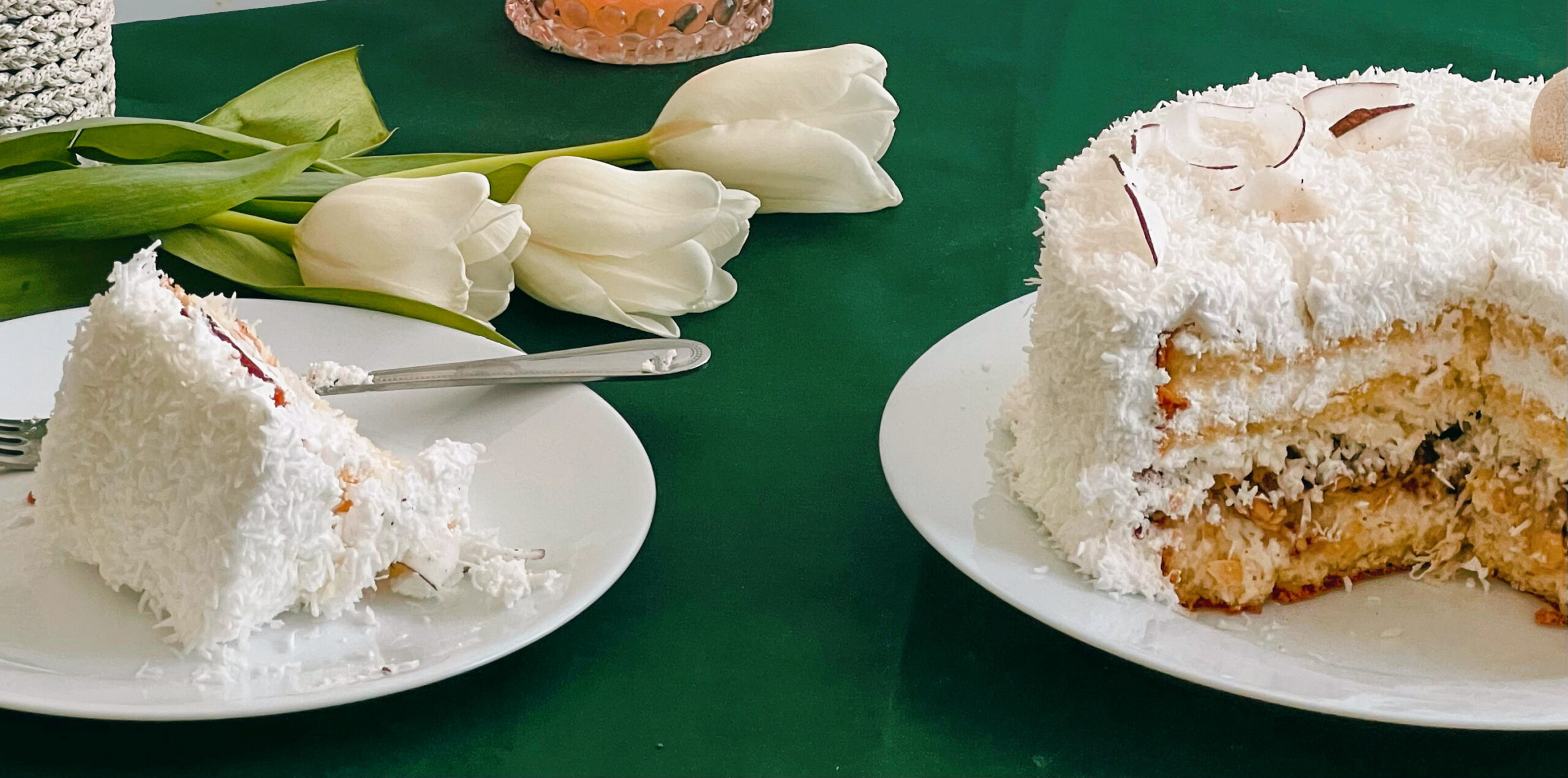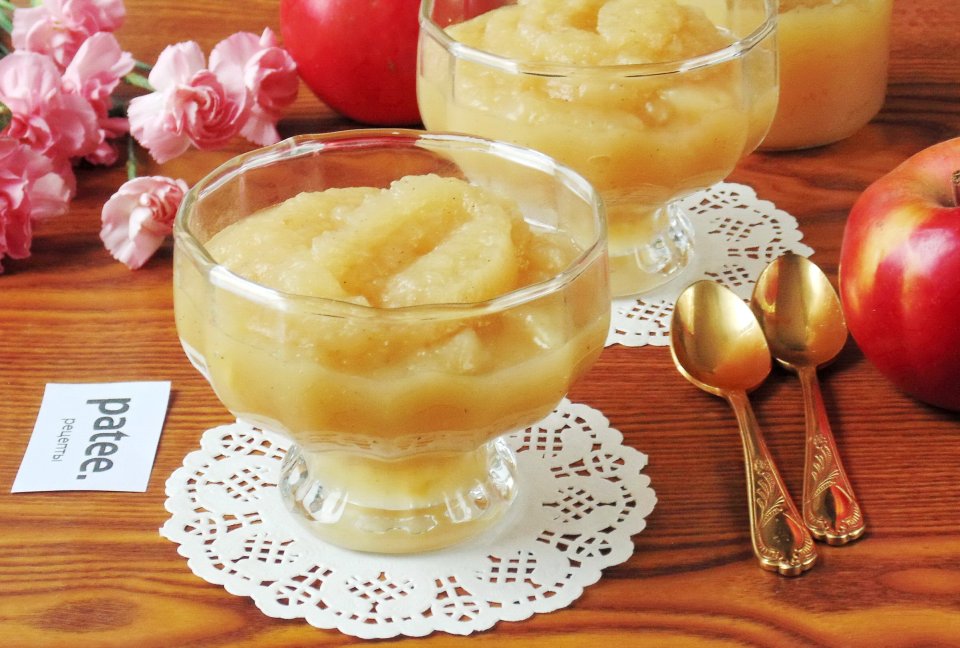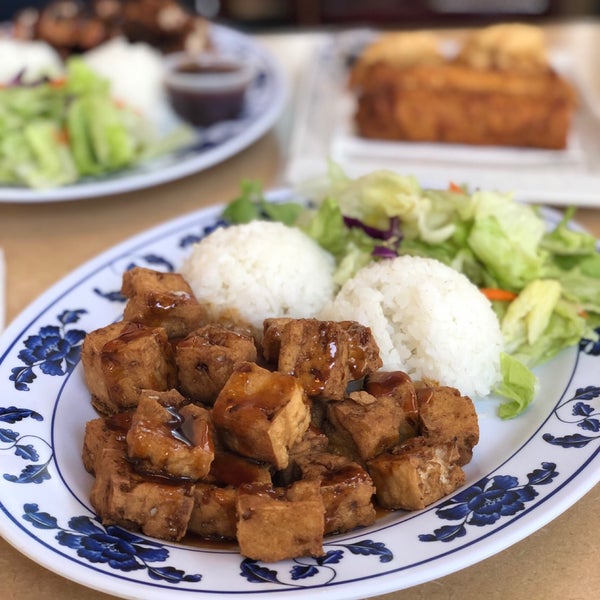
Hawaii is a paradise for more than one reason. The scenery is glorious, the weather is perfect all year round, the people are kind and welcoming, and the entire island chain is a food lover’s heaven. Our Hawaiian afternoon tea makes use of the lovely local ingredients that are plentiful on the islands. There are also some quirky aspects of Hawaiian cuisine, like the passion for Spam that pervades the culture. Hawaii is no place for food snobs. Let’s start our Hawaiian vacation with open hearts, open minds and the spirit of Aloha.
Hawaiian Haiku
The Blue Moon glimmers
Over the dark sea and lights
Up the taro field
Haiku
Near the white ginger
Two dogs at twilight gnaw on
A fresh coconut


Menu
Beverages:
Iced Hibiscus Tea
Hot Ginger Tea
Iced Kona Coffee
Almost Shave Ice: Pineapple and Coconut Granita Cups
Savories:
Spam Musubi (Seaweed Wrapped Rice Rectangles with Spam Filling)
Fried Poke (Spiced and Seared Ahi Tuna Cubes)
Hawaiian Banana Bread
Cream Cheese and Guava Jelly Sandwiches on Hawaiian Sweet Bread (Hawaiian Sweet Bread is actually Portuguese, brought to the islands by Portuguese immigrants who came to work as paniolos (Hawaiian cowboys) on local ranches. This bread is easy to find in any good grocery store on the mainland.)
Pulled Kalua Pig Sandwiches on Taro Rolls
Sweets:
Fresh Pineapple Chunks
Haupia (Coconut Gelatin Pudding Served in Cubes)
Kona Coffee Shortbread Cookies
Dark Chocolate and Macadamia Nut Truffles
Hawaiian Afternoon Tea—an afterthought
While this menu will create a lovely Afternoon Tea, which you can share with friends as you fantasize about actually being in Hawaii, you could also expand the menu for a special buffet meal for six to eight guests. This menu would make a beautiful Easter Buffet, Graduation Gathering, or Birthday Brunch. Here we offer a few suggestions for additions to the Hawaiian Tea menu to create a meal for a larger group. All of the supplementary foods we recommend are widely eaten in Hawaii and continue the spirit of Hawaiian cooking:
Boiled eggs or deviled eggs (brightly colored Easter Eggs for an Easter brunch)
Sweet potatoes baked in coconut milk
Spiced edamame (cooked soy beans in their pods)
Cole slaw
Macaroni salad (surprisingly popular in Hawaii!)
Ellen’s Coconut Cake from our Southern American Afternoon Tea Menu


Recipes Included:
Almost Shave Ice: Pineapple and Coconut Granita Cups
Anyone who has been to Hawaii knows that Shave Ice (without a “d” on the end of shave) is the most popular refreshing snack in the islands. And why not? It keeps everyone hydrated and makes use of the lovely fruits, such as guava, passion fruit (lilikoi,) mango, pineapple, and coconut that grow abundantly in the tropical climate. Shave Ice is really nothing but shaved ice, with a snow-like texture if possible, with fruit syrup poured over it, although real Shave Ice gourmets like to add extra toppings like ice cream, condensed milk, fresh fruit, azuki beans (Japanese style sweetened red beans) and mochi balls. While Shave Ice stands are everywhere in Hawaii, it is difficult to make this treat at home if you do not own an ice shaving device.
For our readers who may not own an Ice Shaver, we offer a recipe for Pineapple and Coconut Granita, which you can make at home in your freezer. You might want to designate one friend to be the first to arrive at your Hawaiian Afternoon Tea and greet each guest with a small glass of Pineapple and Coconut Granita as they arrive. Granita is made of flavored ice crystals, and like Shave Ice, it melts very quickly, and cannot be served conveniently from a tea table. However, given to each guest, one by one, as they arrive, a glass of Granita can be like a lei, welcoming each person to the gathering. It will also serve as a foreshadowing of things to come, as the sweets for our Afternoon Tea include pineapple chunks and coconut gelatin.
Spam Musubi
Musubi is Japanese snack food. It is a hand-shaped rectangle of plain rice topped with cooked egg or meat attached with a strip of seaweed like a belt around the middle of the Musubi. This wildly popular sandwich substitute is sold at quick stop grocery stores and golf course snack bars all over the Hawaiian Islands. The Hawaiian version of this old Japanese favorite, with a slice of Spam on top, is the most popular of all. Even if you have never eaten Spam Musubi, you can become an honorary Hawaiian by making this simple snack at home.
When you get started on this recipe, do not discard the Spam can, as you will be using it as a mold to shape the Musubi, which will be the same shape as a slice of Spam. Hawaiians who make Musubi all the time use little plastic molds for shaping the Musubi, but we will have to improvise.


Fried Poke
Poke (pronounced Poe-Keh,) shows up at every Hawaiian party from First Birthday Luaus to festive wakes. Poke is cubed, marinated raw fish, often ahi tuna or octopus, seasoned with onions and seaweed. Hawaiian grocery stores, fish markets and delicatessens offer fresh Poke every day, and much of the store-bought Poke is very fine quality. If you can find good Poke in your neighborhood, do not hesitate to bring it home for your Hawaiian Afternoon Tea and serve it on the day it was purchased.
However, we suspect that some of our readers may not be too keen on the idea of eating raw fish, so we suggest pan searing the Poke just before serving time. And for our friends who do not have a Hawaiian fish market in the neighborhood, we offer this easy do-it-yourself Poke recipe. Traditional Poke contains Hawaiian kikui nuts and ogo seaweed, but these ingredients may be difficult to find. You can use chopped macadamia nuts as a substitute for the kikui nuts, but try to find the ogo if you can. If you can’t, a Poke spice mix, including dried ogo, is available from Noh Foods of Hawaii ([email protected].) You will need to rehydrate the ogo for a couple of minutes and follow the directions on the package. You can add the onions and the other ingredients on your own.


